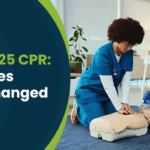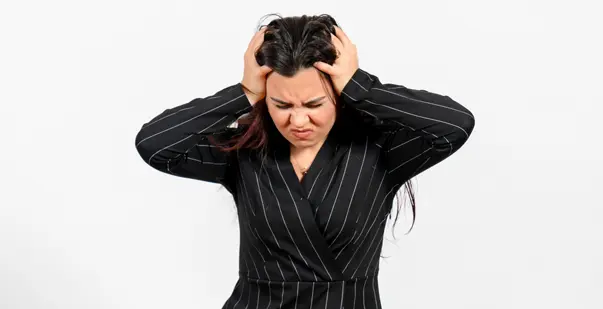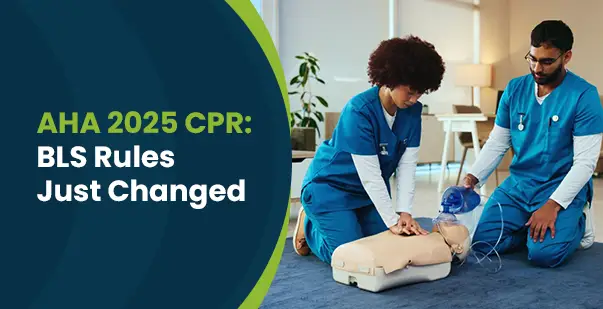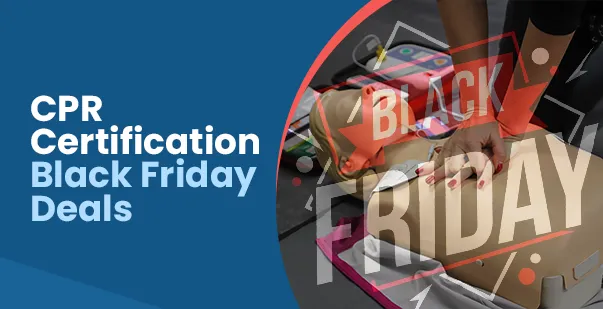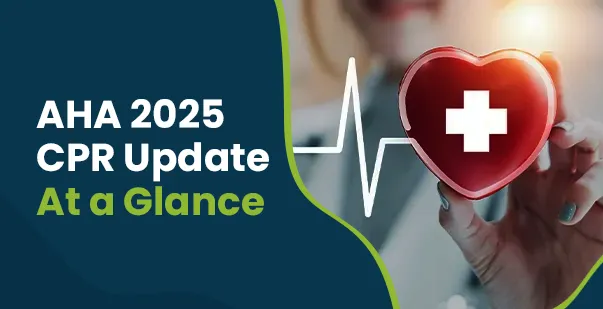Panic attacks are sudden and intense feelings of fear. Anxiety disorders are the most common mental illness in the U.S. They affect 40 million adults (18% of the population) every year. It causes physical symptoms, leading to a racing heart, sweating, and fast breathing. Individuals experiencing panic attacks develop panic disorder, a kind of anxiety disorder. Several kinds of medications and therapy can treat panic attacks successfully and treat the disorder.
What is a panic attack?
Panic disorder affects about 6 million adults in the U.S. A panic attack causes sudden, temporary feelings of fear, causing physical reactions in response to non threatening situations. When you are experiencing a panic attack, you may sweat a lot. This may make it difficult to breathe. Additionally, it may feel like a heart attack is on the way. Panic attacks are the main symptom of the disorder; however, this can happen with several other conditions, such as the following:
- Mood disorders
- Anxiety disorders
- Phobias
- Trauma and stressor-related disorders
- Psychotic disorders
- Certain medical conditions
While panic attacks are not dangerous or harmful in nature, frequent attacks can be harmful and decrease the quality of life.
What are the signs of a panic attack?
A panic attack is sudden, and the symptoms can escalate within 10 minutes after it starts and soon disappear. The physical symptoms of a panic attack include the following:
- Racing heart
- Nausea
- Sweating
- Trembling or shaking
- Tingling or numbness
You may also feel
- Intense terror
- Fear of losing control
- Choking sensation
- A feeling of death
These attacks are unpleasant and very frightening. If you are experiencing such an attack, it is crucial to get panic attack help. They offer you a diagnosis and ensure that there is no physical cause.
Read More: Asthma First Aid: What To Do During An Asthma Attack?
How to stop a panic attack?
Your healthcare provider will ask you about the symptoms. They may run tests that cause similar symptoms, such as heart disease and respiratory problems. Keep reading to know how to deal with panic attacks:
1. Remember it will end
During a panic attack, it is crucial to remember that the feelings will pass and cause no physical harm. This is a brief period of concentrated anxiety that will be over soon. Panic attacks often tend to peak within 10 minutes, and the symptoms soon start to subside.
2. Take deep breaths
Deep breathing can benefit individuals with anxiety disorders. Panic attacks can lead to rapid breathing and chest tightness. This makes the breath shallow. It can make you feel more anxious and tense. You must try to breathe slowly and deeply while focusing on each breath. Breath deeply from the abdomen while filling the lungs slowly and steadily. Keep counting both the inhalation and the exhalation.
You can try breathing by using techniques 4–8. This involves the following:
- Breathing in for 4 seconds
- Holding breath for 7 seconds
- Exhaling slowly for 8 seconds
3. Try lavender oil
A 2019 study found that lavender oil reduced blood pressure levels in individuals experiencing dental anxiety. Research suggests that oral administration and inhalation of lavender oil help relieve anxiety. You can hold the oil under the nose while inhaling gently or dab it on a handkerchief to smell it. If you do not like lavender, you can replace it with any other essential oil, such as orange or lemon.
4. Find a calmer location
Certain sights and sounds tend to intensify panic attacks. Find a peaceful spot, if possible. This means leaving a busy room or leaning against a wall. Sit in a quiet place to create some mental space. This makes it easier to focus on breathing and other coping strategies.
5. Focus on a soothing object
During thoughts of distress, you might feel overwhelmed with feelings or memories. You must focus on one stimulus to reduce other stimuli. When the person looks at the item, you might want to think about how it feels and who made the shape. This technique helps reduce the symptoms of panic attacks and makes them feel better.
Additionally, if someone has recurring panic attacks, they often carry an object to help ground them. This can be a small toy or a hair clip. The grounding techniques involve people dealing with anxiety and attacks. Other grounding techniques include:
- Visualizing a space
- Focusing on senses
- Listening to music and nearby sounds
6. Use the 5-4-3-2-1 technique
Panic attacks are scary and can make individuals feel detached from reality. This is due to the intensity of the anxiety that can overtake other senses. Try the 5-4-3-2-1 method instead. This technique is a kind of mindfulness and helps channel the person’s focus better. This removes them from the source of stress. Use this method by completing the following steps slowly:
7. Look at five separate objects
Think of the objects distinctively, and for a short while.
Listen for four distinct sounds: Consider where the noise came from and how they distinguish from one another.
8. Touch the three objects
Consider the temperature and the texture to know their uses.
9. Identify the smells
This could be the smell of coffee, soap, or laundry detergent.
10. Name one thing that you can taste:
Notice the taste in the mouth and try a candy.
11. Repeat a calming speech
A mantra is a word or phrase that may help with focus and give strength. Repeating the mantra can help you reduce anxiety, feel less stressed, and promote calmness. The speech or the mantra can take the form of reassurance. It may be a simple mantra that says, ‘this too shall pass’. As you focus on the mantra, the physical responses slow down, allowing them to regulate breathing and relax muscles.
12. Take a walk or do gentle exercise
Walking can remove an individual from a stressful environment. The rhythm of walking can help them regulate their breathing. As you move around, it releases hormones known as endorphins. This helps relax the body and boost your mood. Regular exercise can help reduce anxiety and the number of panic attacks. This involves relaxing muscles and tensing up.
13. Practice muscle relaxation
Muscle tension is another symptom of panic attacks. Practiced muscle relaxation techniques might limit an attack. If your mind senses that your body is relaxing, then the other symptoms, such as fast breathing, may diminish. Progressive muscle relaxation is an effective method to cope with anxiety attacks. This involves tensing up while relaxing varied muscles in turn. You can do this by ensuring the following:
- Holding tension for 5 seconds
- Say relax while releasing the muscle.
- Relax the muscle for 10 seconds before moving on to the next muscle.
14. Visualize your happy place
Your happy place should make you feel calm, safe, and relaxed. The specific place is different for everybody. During an attack, close your eyes to imagine being in this place. Think of how calm it is. You can also feel your feet touching the soil or the sand.
15. Take medications:
A doctor may prescribe a ‘use-as-necessary’ medication which depends on the severity of panic attacks. These medications usually work fast. Some comprise beta-blockers or benzodiazepine. Propranolol is a beta-blocker that slows a racing heartbeat while decreasing blood pressure. Benzodiazepines, which are prescribed for panic attacks, include alprazolam and diazepam. These medications are habit-forming. Hence, you must use them under the direction of a doctor. A doctor may prescribe a few serotonin reuptake inhibitors. This may help prevent panic attacks from occurring.
16. Confide in someone you trust
: If panic attacks occur frequently, it may be helpful to confide in someone and share your thoughts. If an attack happens in public, you can ask somebody to help. They can locate a quiet spot and prevent others from crowding in.
- Track your triggers: Learn your triggers, as certain things may repeatedly trigger panic attacks. You must manage or avoid the triggers. The potential triggers include the following:
- Crowds
- Money issues
- Arguments
- Public speaking
However, a few individuals may experience panic attacks at unexpected times without any triggers.
17. Seek counseling:
Panic attacks are frightening. If you are worried, you should not hesitate to seek help. If you have chest pain or trouble breathing, seek immediate medical care. You must call your healthcare provider if you have panic attacks and experience the following:
- Extreme irritability
- Chronic anxiety
- Panic attack symptoms
- Fear of leaving your home
- Sleep problems
Panic attacks can be managed. Remember, you are not alone.
It is not always possible to predict panic attacks. However, having a plan in place can make you feel in control. Follow the steps mentioned above, like finding a peaceful stop and practicing deep breathing and grounding techniques to know how to deal with a panic attack. You can adopt long-term strategies that reduce the frequency of attacks, such as lifestyle choices, therapy, and mechanisms to manage anxiety in daily life.
